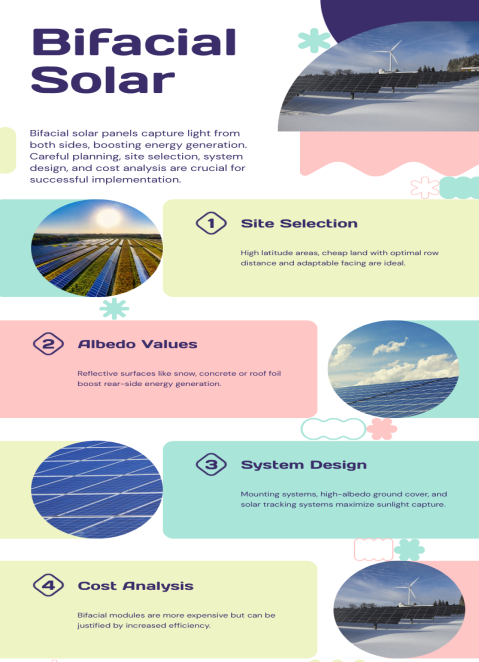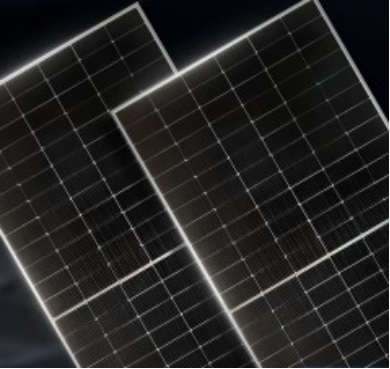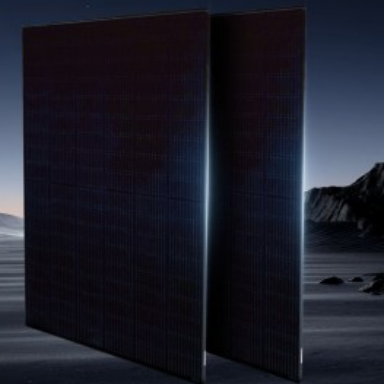Bifacial Solar Modules: What Are They and How to Maximize the Benefits
Bifacial solar modules are capturing everyone’s attention as a revolutionary innovation in solar energy that supports the absorption of sunlight on both sides.
These innovative bifacial solar modules are quickly becoming the go-to choice for large ground-mount solar farms and carports looking to maximize their clean energy output, accounting for nearly 98% of US solar imports, according to a recent report by Reuters [1].
Read on to learn more about the key features, benefits considerations, and best practices for implementing these bifacial solar modules.

Understanding Bifacial Solar Modules
What is a Bifacial Solar Module?
Bifacial solar modules feature dual-side PV cells and a transparent back sheet, allowing sunlight to pass through and reach the rear-facing cells. This design enables bifacial modules to capture not only direct sunlight but also those from reflected sources, such as the ground or nearby surfaces.
This dual-sided design offers higher energy yields and increased efficiency. In addition, these bifacial modules are compatible with various mounting systems and shading scenarios. They excel especially in environments with high sunlight reflection, like snowy or sandy areas, and generally have low maintenance requirements.
How do Bifacial Solar Modules differ from the Mono-facial Ones?
While conventional solar modules feature photovoltaic cells on just the outward-facing surface, bifacial modules employ a unique double-sided cell structure that absorbs sunlight from both front and rear directions. Their transparent back sheets allow reflected rays from the ground to pass through and generate additional electricity.
What’s the Difference between Double Glass and Bifacial Solar Modules?
The difference between double glass and bifacial solar modules lies in their design and function. Double glass design features a glass layer on both the front and back sides, aiming to protect the PV cells from potential induced degradation.
The bifacial solar modules differ from the double glass models by having solar cells mounted on both sides and utilizing transparent back sheets instead of solid rear glass to let reflected rays through.
Benefits of Bifacial Solar Modules for Solar Farm Projects
At first glance, the ability to generate solar power from both sides may not seem revolutionary. But the bifacial solar module’s unique "dual sun-bathing" design translates to massive benefits when implemented across large solar farms and utility projects:
lMore Consistent Energy Generation: While cloud cover severely limits output from classic solar panels, bifacial modules can continue steady production by absorbing available reflected ambient light. This "solar panel illumination from all angles" virtually eliminates weather-related dips in energy yields.
lUp to 30% More Annual Energy Harvests: The laws of physics state bifacial modules provide a potential 30% annualized output boost compared to mono-facial counterparts. By doubling their total solar exposure, bifacial generates substantially more electricity from the same installation areas to accelerate investment payback periods.
lOptimized Land Usage and Design: Enhanced conversion efficiency and energy output also allow for more efficient use of available land. Additionally, the flexibility in design ensures various installation configurations, enabling bifacial modules to be installed in a broader range of locations and environments, including uneven terrain or areas with limited space.
Considerations for Implementing Bifacial Solar Modules
Bifacial solar panels can produce 10-20 % additional power over mono-facial panels, and when the conditions are optimized and solar tracking systems are adopted, that can go up to 30-40% [2]. Therefore, implementing these dual-side solar modules requires careful consideration and planning. There are a few key factors to consider:

Site Selection
Bifacial solar panels are designed to capture the extra diffuse light to boost energy generation, and that means they can work better in high-latitude areas than in lower latitudes. Secondly, the bifacial solar modules require optimal row distance and adaptable facing to achieve higher yields; thereby, cheaper and expansive lands are better suited for their installation.
Albedo Values
With bifacial modules converting sunlight from both sides, the material and color of your solar farm's surface play a significant role in rear-side energy generation. Ideal environments include desert, snow, and icy areas, as well as concrete or highly reflective roof foil.
System Design
Bifacial modules rely on the angles and orientations to maximize the sunlight capture, making an approach to system design highly necessary. Try to integrate specialized mounting systems, high-albedo ground cover, smart solar tracking systems, etc., into the project to harness the benefits effectively and maximize energy generation.
Cost Analysis
While bifacial modules can offer higher efficiency, they also tend to be more expensive upfront. A thorough cost-benefit analysis is necessary to determine if the increased efficiency justifies the higher initial investment.
Best Practices for Optimizing Bifacial Solar Modules
Simply installing bifacial modules isn't enough to maximize results - project stakeholders must proactively implement best practices from Day 1 for optimal power generation and ROI:
1. Reflectivity/Shading Analysis of Your Solar Site: Before configuring your bifacial array layout, audit ground surface reflectivity (albedo) levels across all sun angles and seasons.
2. Model for Ideal Bifacial Module Tilt Angles and Row Spacing: Using site audit findings, perform simulations to calculate panel solar bifacial tilt and row spacing geometry to capture direct light on the front side best while reflecting bonus rays onto the rear sides simultaneously.
3. Only Use High-Quality Bifacial Panels and Mounting Solutions: As with any solar project, quality equipment pays long-term dividends. Source Tier 1 bifacial modules and racking/tracking systems purpose-built for bifacial compatibility and harsh utility environments.
4. Add Single or Dual-Axis Tracking for Optimized Sun Exposure While not mandatory, outfitting your bifacial array with tracking technology creates a powerful multiplier effect by rotating panels to continuously face the sun from both front and rear sides throughout the day.
5. Implement Monitoring and Active Cleaning/Maintenance: With bifacial modules able to generate power from any angle, cleanliness is paramount. Deploy monitoring solutions to identify soiling issues immediately.
Introducing Bifacial's New Efficiency Leaders EliTe Solar
As a prominent player in the industry, EliTe Solar operates with expansive facilities in Vietnam and Cambodia and clientele around the world. Our dedication to excellence has been acknowledged through prestigious accolades such as the 2022 USA Top Brand and the designation as a Top Performer for the years 2021-2023.
Introducing to you our industry-leading bifacial solar modules purpose-built for superior bifacial performance, reliability, and ROI.
EliTeSolar 182-72 N-Type Bifacial Module

lN-Type M10 wafers, advanced TOPCon cell technology, and high-density interconnects.
lMaintains elite energy conversion and output across low-light conditions.
lWithstands up to 5,400 Pa snow loads.
lOptimized bifacial architecture boosts annual yields and accelerates payback periods.
EliTe Solar All-Black 182-54 N-Type Bifacial Module

lOffers up to 22% conversion efficiency from N-type passivated contact cells.
lProvides enhanced low-light output and resistance to light-induced degradation.
lMaximizes bifacial energy generation across virtually any solar site.
lProvides the ultimate discrete appearance with its all-black design.
Conclusion
Bifacial solar modules rapidly redefine what's possible for large-scale renewable energy generation. Their ability to absorb sunlight from every angle unlocks new frontiers of efficiency, consistent output, and optimized land usage that mono-facial panels cannot match.
Ready to harness the power of bifacial solar modules for your project? Contact EliTe Solar today to discover or join us in elevating renewable energy initiatives with industry-leading bifacial solar solutions!
References
[1] Reuters/2024. Exclusive: US plans to restore tariffs on dominant solar technology. Available at https://www.reuters.com/world/us/us-plans-restore-tariffs-dominant-solar-technology-sources-say-2024-04-17/. (Accessed on April 23, 2024)
[2] PV magazine/2020. Bifacial modules: The challenges and advantages. Available at https://www.pv-magazine.com/2020/08/19/bifacial-modules-the-challenges-and-advantages/. (Accessed on April 23, 2024)

